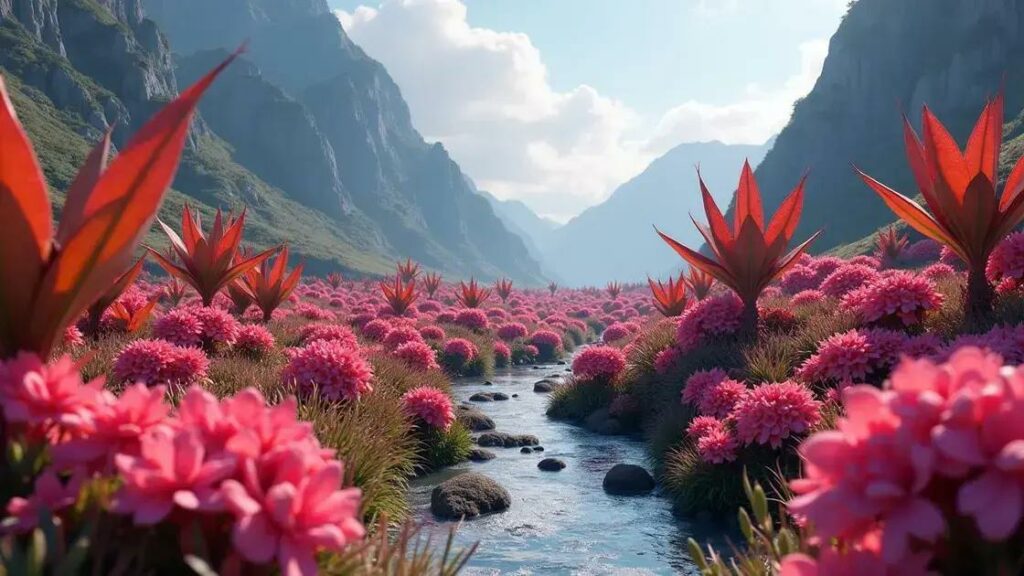How to care for a kalanchoe plant can be a game-changer for plant lovers. If you’ve ever admired these stunning succulents, you might wonder how to keep them thriving. Understanding their unique requirements is essential for vibrant blooms and healthy leaves. Dive into the essentials of maintaining this gorgeous houseplant and unlock its full potential!
Table of Contents
ToggleOptimal watering schedule for your kalanchoe
Optimal watering schedule for your kalanchoe is crucial for its thriving health and abundant blooms. Kalanchoe plants, with their vibrant flowers, require a specific approach to watering that ensures they stay healthy and visually striking.
Watering these succulent plants correctly involves understanding their needs in relation to environmental factors. Here are the essential steps to create the perfect watering schedule for your kalanchoe:
- Understand the plant’s moisture needs.
- Monitor the soil moisture level regularly.
- Water less frequently during the winter months.
- Utilize a well-draining potting mix to prevent excess moisture.
Follow this simple watering frequency guide to keep your kalanchoe healthy:
- Water every 2-3 weeks during the growing season (spring and summer).
- Reduce watering to once a month in the fall and winter.
It’s important also to recognize signs of overwatering or underwatering:
- Signs of under-watering include wrinkled leaves and droopiness.
- Signs of overwatering include yellowing leaves and root rot.
Watering techniques for kalanchoe
When watering your kalanchoe, use the following methods:
- Water thoroughly until it drains from the pot’s bottom.
- Avoid letting the plant sit in standing water.
- Consider using a moisture meter for precise readings.
By adhering to these guidelines, your kalanchoe can flourish. For more information on caring for indoor plants, consider exploring indoor gardening techniques.
Sunlight exposure for healthy kalanchoe growth

Sunlight exposure for healthy kalanchoe growth plays a vital role in maintaining the well-being of your kalanchoe plant. Proper light conditions can enhance its growth and promote stunning blooms.
Understanding how to provide the right amount of sunlight is key to thriving kalanchoe plants. Here’s a guide on optimal light conditions:
Ideal light conditions for kalanchoe
Kalanchoe plants thrive in bright, indirect sunlight. While they can tolerate some direct sunlight, excessive exposure can lead to leaf burn. Here’s how to maximize light exposure:
- Place your kalanchoe near a south-facing window.
- Allow morning sunlight, which is gentler, for a few hours.
- Avoid strong, direct afternoon sun, which can harm the leaves.
Signs of insufficient or excessive sunlight
It’s important to monitor your kalanchoe for signs of light imbalance:
- Insufficient sunlight: Stretched stems and sparse growth.
- Excessive sunlight: Leaf scorch and browning edges.
Adjusting the plant’s position based on these signs can help maintain its health.
Supplementing light artificially
If natural light is insufficient, consider using grow lights. Here are a few tips:
- Choose LED grow lights that emit a full spectrum of light.
- Position the lights 6-12 inches above the plant.
- Keep the lights on for about 12-14 hours a day.
Incorporating artificial lighting can significantly boost plant health and growth, especially during shorter winter days. For further tips on indoor plants, check out exploring indoor gardening techniques.
Essential soil mix and nutrients for kalanchoe plants
Essential soil mix and nutrients for kalanchoe plants are vital for their health and vibrant blooms. Finding the right combination will ensure your kalanchoe thrives throughout the year.
The ideal soil mix for kalanchoe needs to provide excellent drainage and aeration while retaining enough moisture to keep the roots hydrated. Here’s how to create the perfect soil mix:
Creating the ideal soil mix
To make a well-draining soil suitable for kalanchoe plants, consider the following components:
- Cactus soil: Use pre-mixed cactus soil as a base.
- Perlite or pumice: Add to improve drainage and aeration.
- Organic matter: Incorporate peat moss or coconut coir to retain some moisture.
Here’s a simple recipe for an ideal kalanchoe soil mix:
- 2 parts cactus soil
- 1 part perlite or pumice
- 1 part organic matter
Nutrient requirements for kalanchoe
Providing the right nutrients is just as important as the soil mix. Kalanchoe benefits from:
- Balanced fertilizer: Use a balanced liquid fertilizer (like 10-10-10) during the growing season.
- Fertilization frequency: Fertilize every 4-6 weeks from spring through summer.
- Organic alternatives: Consider using diluted compost tea for natural nutrient support.
Signs of nutrient deficiency
Monitor your kalanchoe for signs indicating nutrient deficiencies:
- Yellowing leaves: May indicate nitrogen deficiency.
- Pale leaves: Can signal a lack of micronutrients.
By ensuring optimal soil and nutrient conditions, your kalanchoe can flourish beautifully. For more insights into plant care, visit exploring indoor gardening techniques.
In conclusion
Caring for a kalanchoe plant requires an understanding of its specific needs, including optimal watering schedules, sunlight exposure, and the right soil mix and nutrients. By following the tips outlined in this guide, you can ensure that your kalanchoe flourishes with vibrant blooms and healthy growth. Remember, the key to a thriving indoor garden is to pay attention to these essential care practices. For additional ideas and tips on enhancing your indoor garden, don’t hesitate to explore more resources.

